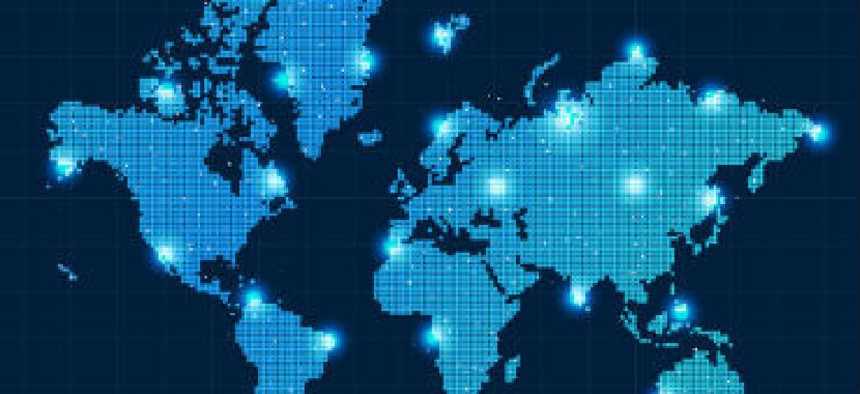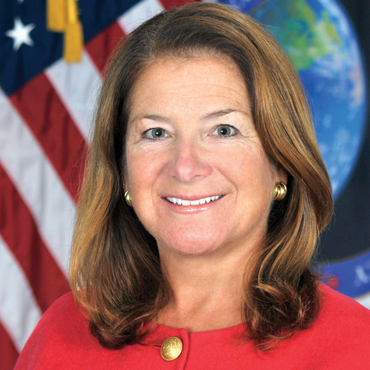Long: NGA is moving toward 'immersive intelligence'

The NGA director said the Map of the World can "break down the barriers between collectors, analysts, customers and decision-makers."

NGA Director Letitia Long said the agency's Map of the World can tap into a vast trove of sources, including data from satellites and social media sites.
Of the 17 U.S. intelligence agencies, the National Geospatial-Intelligence Agency is best suited to turn big data into actionable intelligence, NGA Director Letitia Long said. She told FCW in an April 14 interview that mapping is what her 14,500-person agency does, and every iota of intelligence can be attributed to some physical point on Earth.
"We really are the driver for intelligence integration because everything is somewhere on the Earth at a point in time," Long said. "So we give that ability for all of us who are describing objects to anchor it to the Map of the World."
NGA's Map of the World entails much more minute information than the simple cartography the phrase might suggest. It is a mix of information from top-secret, classified and unclassified networks made available to U.S. government agencies, some of their international partners, commercial users and academic experts. The Map of the World can tap into a vast trove of satellite and social media data, among other sources.
NGA has made steady progress in developing the map, Long said. Nine data layers are online and available now, including those for maritime and aeronautical data. A topography layer will be added in the next two weeks, and two more layers will round out the first operational version of the map in August.
A host of private-sector firms and universities are helping stitch together the Map of the World, with Ball Aerospace and Technologies and Leidos each producing data layers, Long said.
She spoke with FCW to preview her keynote speech ahead of the GEOINT Symposium April 14-17 in Tampa, Fla. The conference is one of the largest gatherings of intelligence professionals. According to an advance copy of her speech, she planned to tell the audience that "NGA is at a decisive moment in our history" because it is helping the intelligence community transition from using integrated intelligence to immersive intelligence.
"By immersion, I mean living, interacting and experimenting with the data in a multimedia, multisensory experience with [geospatial intelligence] as its core," Long said. "Immersion will break down the barriers between collectors, analysts, customers and decision-makers."
The Map of the World is the foundation for the geo-intelligence that NGA provides its fellow intelligence agencies and can serve as a reference point for collaboration. The agency can, for example, provide geospatial data on a person or facility, to which the National Security Agency, CIA or Defense Intelligence Agency could add their own intelligence, Long told FCW.
The Intelligence Community's CIO plans to make IT-based, interagency collaboration the backbone of intelligence gathering through the Intelligence Community Information Technology Enterprise (IC ITE) strategy. That 2012-2017 blueprint aspires to develop a single, standards-based IT architecture for the Intelligence Community.
If the five big intelligence agencies -- the CIA, DIA, NGA, NSA and the National Reconnaissance Office -- show leadership in implementing IC ITE, the other 12 agencies will follow suit, Long said.
She pointed to the fact that NGA and DIA have installed 5,000 desktops built on a common IT environment as an example of that leadership. Meanwhile, NGA is working with NSA to move the former agency's data to a government cloud service.
There is always more than can be done with data, Long said, and NGA is honing algorithms to build into its data-sharing services. Those predictive analytical models will be unveiled on a continuous basis in the coming months and allow NGA analysts to spend their time tracking what they don't know rather than rehashing what they do know, she added.


